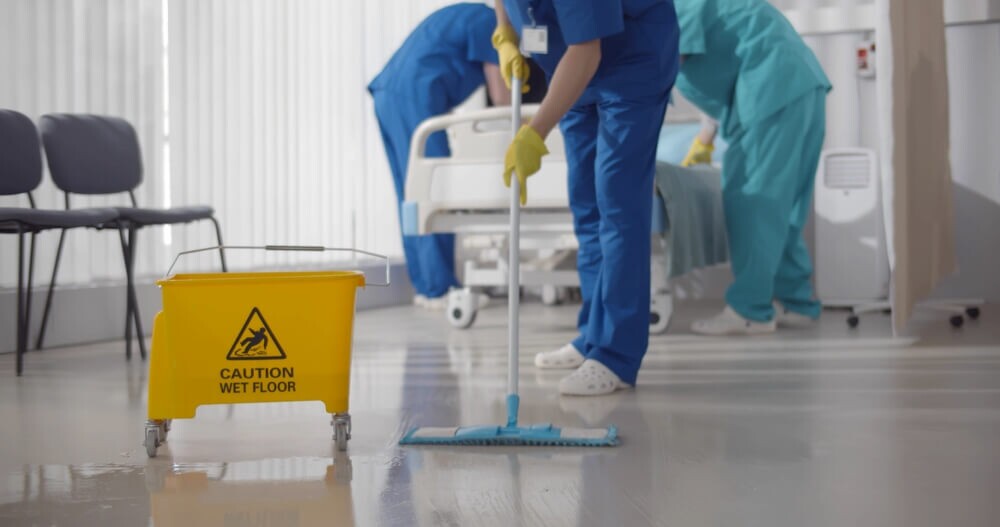
Healthcare workers have jobs that involve moving quickly in busy environments, where hazards like wet floors and cluttered walkways are common. That makes fall prevention an important safety concern in the healthcare industry. Here’s how to prevent slips, trips, and falls in the workplace for these vital employees.
Importance of Proper Facility Design for Preventing Falls
Facility design plays a key role in preventing falls in healthcare settings. Every year, many healthcare workers suffer injuries from falls at work. These accidents hurt workers, affect patient care, and increase medical costs. Good facility design goes a long way toward preventing slips, trips, and falls.
Facilities must ensure that floor surfaces like tile and linoleum have textures or coatings to prevent slipping. Regularly cleaning spills and clearly marking wet areas are also essential for reducing fall risk.
The overall layout of the facility matters, too. Wide, clear pathways allow healthcare workers to move quickly and safely. Removing unnecessary steps or obstacles reduces the chance of trips and falls.
Regular Maintenance Practices to Minimize Fall Risks
Regular maintenance in healthcare facilities is another essential part of minimizing the risk of falls for workers. Healthcare workers depend on a safe environment to provide patients with the best care possible. Keeping floors, lighting, and walkways in top condition is essential to slip, trip, and fall prevention.
Facilities must regularly check and repair the flooring. This includes fixing any loose tiles, torn carpets, or uneven surfaces. Good lighting is also necessary so staff can see where they’re going, especially in busy corridors and at night. Facilities should replace burnt-out bulbs immediately and consider brighter lights in dim areas.
Facilities must keep walkways free from clutter at all times. Busy healthcare environments often have a lot of equipment and supplies to keep track of, so facilities must take proactive steps to keep these items out of walkways. Organizing and storing items properly keeps walkways safe and accessible.
Personal Protective Measures for Healthcare Workers
Facilities can significantly reduce fall risks by prioritizing personal protective measures for workers. Specifically, proper footwear and appropriate personal protective equipment (PPE) allow workers to perform their duties safely and effectively, keeping themselves and their patients safe.
The right footwear is essential in healthcare environments. Healthcare workers need shoes that provide good grip and support. Non-slip soles are a must, especially on slippery surfaces like hospital floors. Shoes should fit well and offer comfort for long hours of standing or walking.
Providing PPE for specific tasks can also mitigate fall risks. In some situations, workers might need to wear additional gear for safety. For example, non-slip shoe covers or additional protective layers might be necessary to prevent slips and falls when handling hazardous materials.
Get Help from Our Workplace Fall Accident Attorneys
If you’re a healthcare worker who’s suffered fall injuries at work, the workplace injury lawyers at Jebaily Law Firm are ready to help. Our experienced team understands the unique challenges of claims arising from healthcare work accidents, and we are dedicated to fighting for your rights.
Contact us today for a free consultation to learn how we can seek justice and fair compensation for you.

